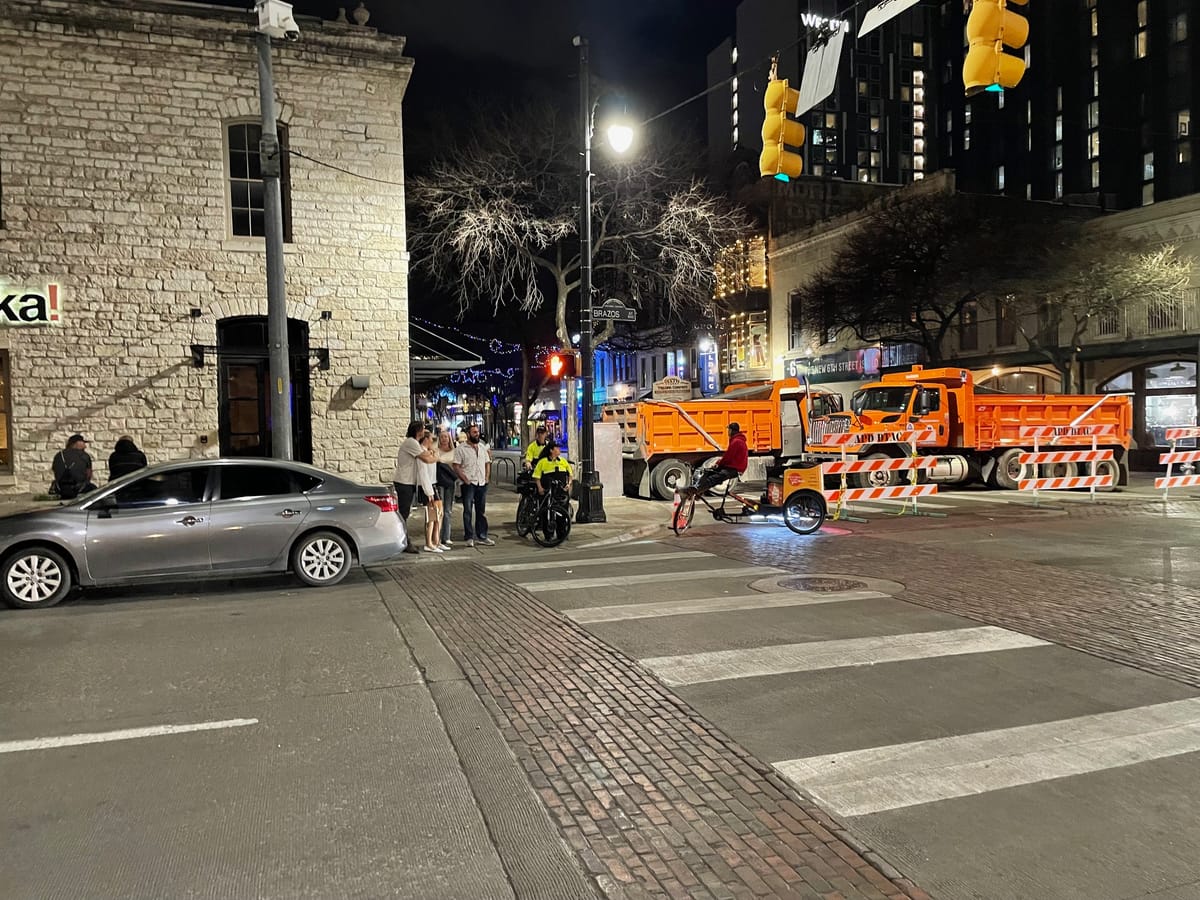What is the cost-benefit of Dirty 6th?
What does the nightly debauchery cost taxpayers?

KUT reports that the street changes the city is piloting on 6th Street are drawing mixed reviews from business owners in the notorious party district. In an attempt to better-control the oft-riotous revelers, the city is no longer shutting the street down to car traffic on weekend nights but has expanded the sidewalks by taking away street parking.
Matt McDonald, one of the owners of the San Jac Lounge, says sales have declined.
McDonald said not allowing people in the street means more people are clustered on the sidewalks, impeding access to his bar. New barriers also take away parking in front of the building.
This quote from Shawn Cirkiel, the chef/owner of gastropub Parkside Austin, caught my interest:
“The Sixth Street area has basically been held hostage by one block of bars and their traffic,” Cirkiel said. “And it's time for the city, as a whole, to take back the district and create a safe and healthy environment for all of Austin, as opposed to just drunk people at 2 in the morning.”
It's a question worth asking: what is the total value generated by 6th Street bars and how does it compare to the cost we as taxpayers are spending to manage and mitigate the debauchery via police, EMS, jail, sobering center etc?





